Refund Guaranteed
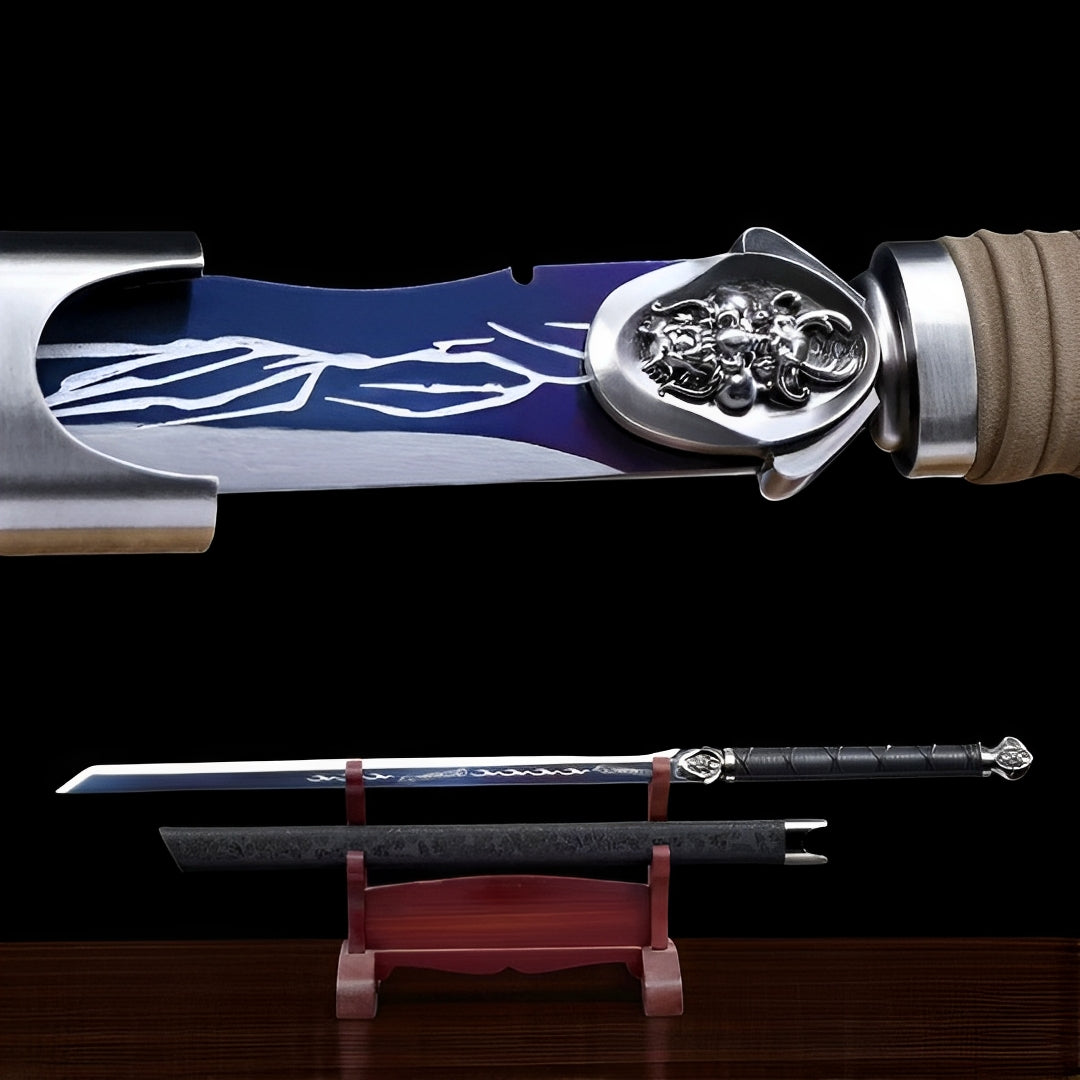

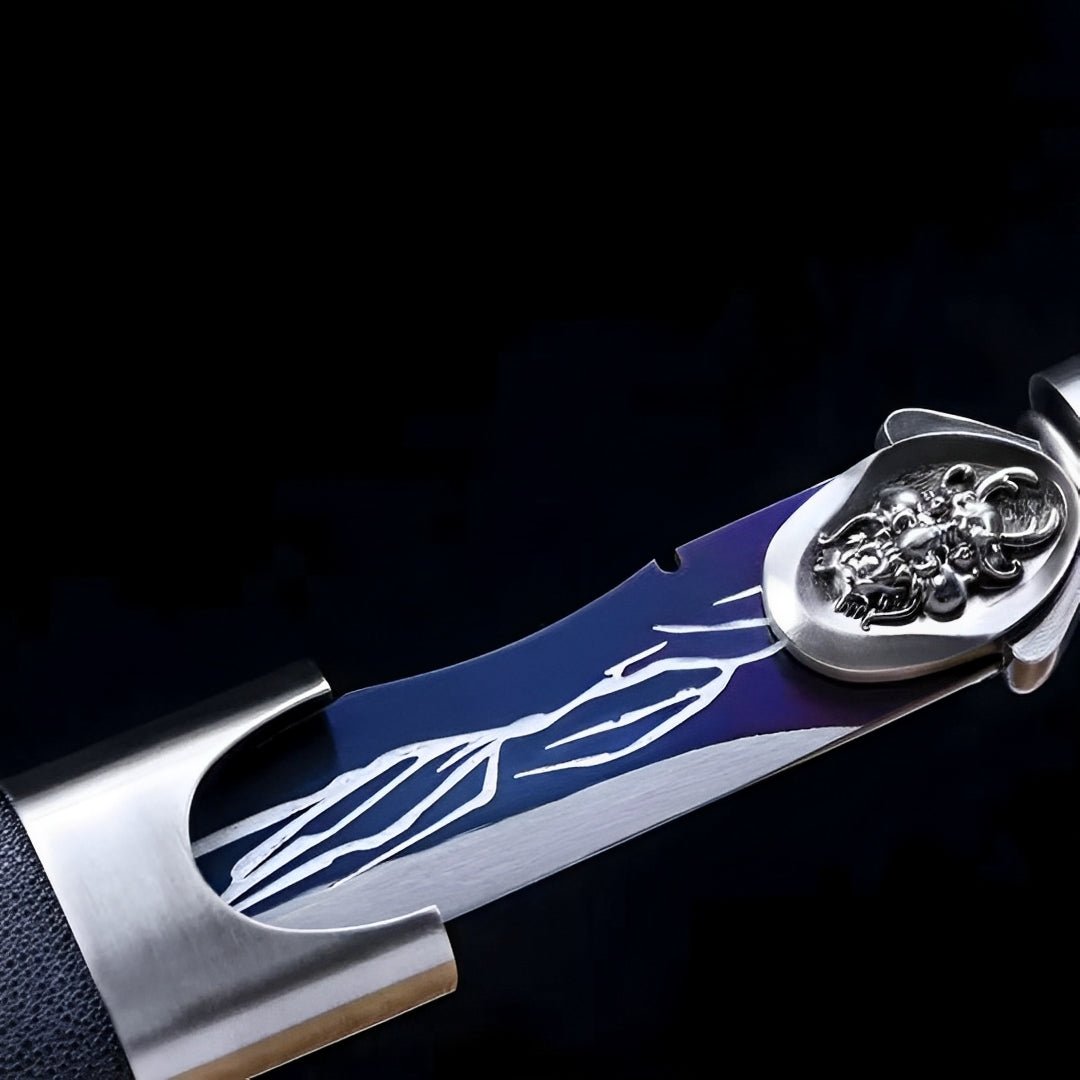
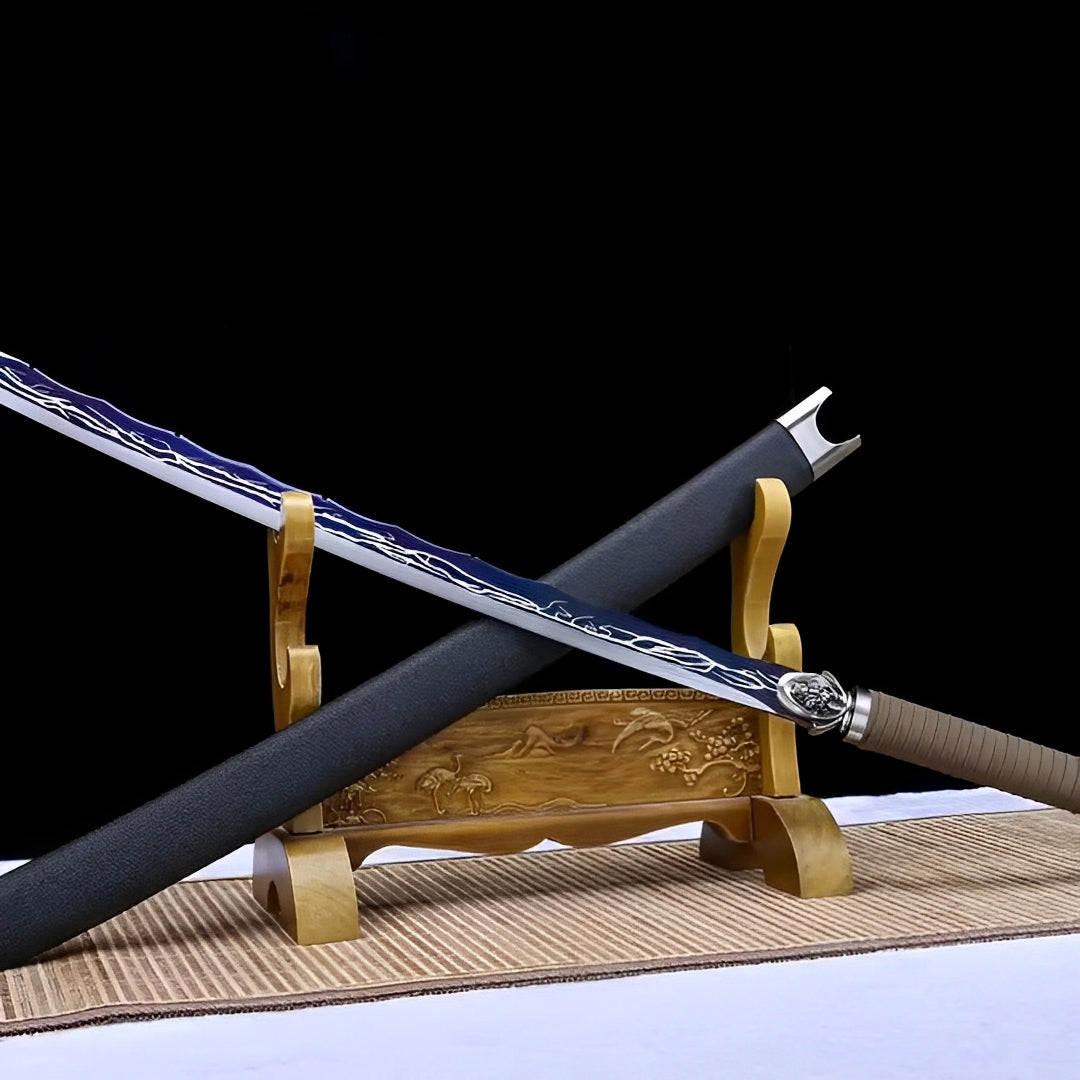
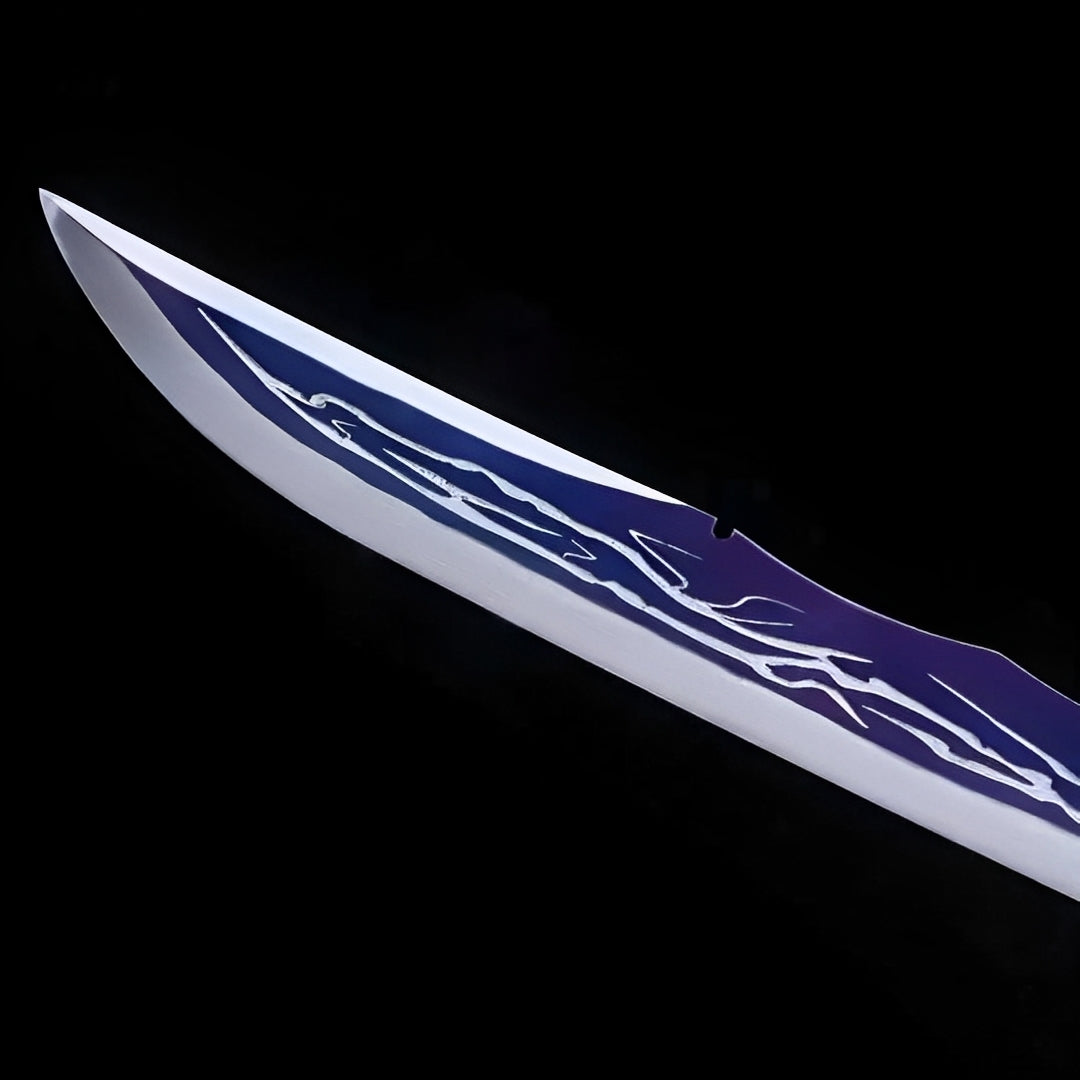
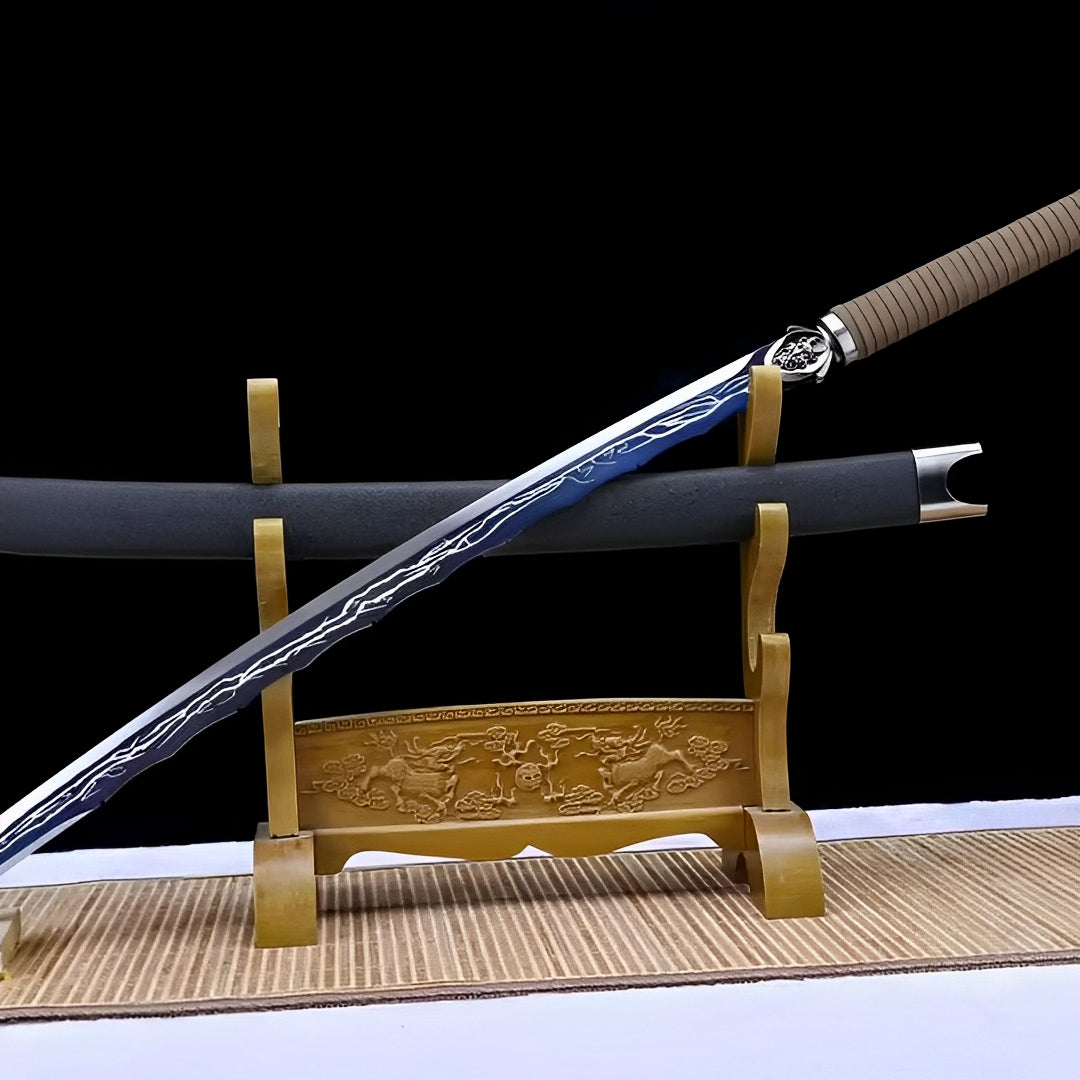
Why choose us
Ships within 48/72h
Forged Blade
Collector Quality
Trusted Globally
Inspired by Japan
Raisenga Katana - 雷閃牙
Included with your order



Note: Engraving placement and orientation may vary by blade model (hamon, geometry, and flat area).
Free Shipping over $250
No Bots, No AI
Refund Guaranteed
Free Shipping over $250
No Bots, No AI
Our team is here to help with any questions or concerns.
We’re always happy to assist you — don’t hesitate to reach out.
Why choose us
Ships within 48/72h
Forged Blade
Collector Quality
Trusted Globally
Inspired by Japan

Raisenga Katana - 雷閃牙
Specifications
- Handmade
- SHARP
- Blade: T10 Steel
- Full Tang
- Iron Tsuba
- Total size: 105cm / 41 (in)
- Blade size: 72cm / 28 (in)
- Blade width: 3,2cm / 1.2 (in)
- Blade thickness: 0,7cm / 0.27 (in)
- Handle size: 30cm / 11.8 (in)
Raisenga Katana - Spiral Wind Vortex Blade
Command invisible forces with Raisenga Katana, blade channeling wind's concentrated fury. This elemental wind mastery sword refuses acknowledging air's supposed weakness - royal blue steel carved with white tornado patterns proving atmosphere's devastating power, chrome relief tsuba capturing moment before spiral strikes, the entire aesthetic celebrating physics teaching that wind moving fast enough cuts steel, lifts aircraft, carves canyons. Not weapon channeling gentle breezes but instrument focusing atmospheric pressure into surgical strikes, asking whether you appreciate visible power alone or recognize that invisible forces often prove most dangerous precisely because eyes can't track what ears hear too late.
Spiral Concentration Philosophy
Raisenga (雷旋牙 - Thunder Spiral Fang or potentially 嵐旋牙 Storm Spiral Fang) captures specific combat philosophy: concentrating diffuse power into focused point. Wind exists everywhere but accomplishes nothing until gathered, compressed, spun into vortex concentrating atmospheric pressure into devastating force. Tornadoes don't destroy through wind's inherent strength but through concentration - taking mild breeze existing across square miles, focusing into hundred-meter funnel, accelerating to speeds cutting through buildings like paper.
This vortex blade embodies that principle physically through white spiral patterns and philosophically through what spirals represent: power concentration, rotation creating stability, circular motion enabling perpetual force. Ancient warriors understood this - why spinning attacks generate more power than linear strikes, why drilling motions penetrate deeper than straight thrusts, why whirlwind techniques overwhelm through sustained rotation where single swings exhaust quickly.
Traditional martial arts across cultures developed spinning techniques independently arriving at identical conclusion: rotation concentrates force. Dervishes spinning achieving trance states, kung fu's tornado kicks, capoeira's constant rotation, even medieval European longsword techniques incorporating full-body spins - all recognized that circular motion taps physics most linear thinking misses. The rotation mastery sword celebrates that universal martial discovery.
Modern physics explains why spirals appear everywhere nature concentrates power: hurricanes, tornadoes, whirlpools, galaxies, DNA's double helix, even water draining achieves vortex form. That universal pattern suggests fundamental truth about how universe organizes energy efficiently. The spiral patterns adorning this blade therefore reference not mere decoration but mathematical reality about power's optimal expression.
Physics enthusiasts particularly appreciate how blade's aesthetics communicate actual aerodynamic principles - how wind doesn't push but pulls (low pressure centers), how rotation stabilizes chaotic forces, how concentration multiplies effect beyond linear addition suggests. The sword becomes educational tool teaching through beauty rather than boring textbook.
Royal Blue Authority
The deep royal blue creates this blade's emotional foundation - not sky's pale blue suggesting openness, not navy's darkness implying mystery, not teal's transitional ambiguity, but commanding royal blue announcing absolute authority. This sovereign air blade color historically reserved for nobility, the pigment's expense limiting access to wealthy families, religious institutions, monarchs whose authority came from divine right rather than popular consent.
The specific shade matters psychologically. Bright blues feel playful; dark blues appear brooding; royal blue strikes perfect balance suggesting confidence without arrogance, authority without oppression, power without aggression. Military dress uniforms worldwide favor royal blue precisely because it commands respect while remaining approachable - you obey not through fear but recognition of legitimate authority.
The blue also references sky at specific hour - that moment after sunset when day's brightness fades but night's darkness hasn't claimed heaven, when atmosphere itself seems to glow with internal light. Pilots call it "blue hour," photographers prize that specific quality of illumination, painters struggle capturing that ephemeral color existing only briefly. The blue hour blade captures that transitional sky, that moment when air itself becomes visible through color alone.
Traditional Japanese color theory associated blues with water primarily but also recognized ao (青) encompassing both blue and green, both water and vegetation, the color of life itself. The royal blue participates in that broader symbolic range while claiming specific authority within blue's spectrum - this isn't just any blue but THE blue, the shade achieving perfect expression of what blue means conceptually.
White Wind Visualization
The flowing white patterns transforming royal blue surface create this blade's kinetic energy - static steel appearing in perpetual motion, solid metal suggesting wind's invisible currents made temporarily visible. These aren't random decorative swirls but carefully designed flow patterns suggesting aerodynamic principles: laminar flow, turbulence transition, vortex formation, boundary layer dynamics.
This aerodynamic art blade captures what wind tunnel visualization reveals - patterns invisible to naked eyes become apparent when smoke, dye, or computational fluid dynamics make air's behavior visible. Those swirling patterns around aircraft wings, those tornado formations in atmospheric models, those hurricane eye structures from satellite imagery - all share underlying mathematics governing how fluids (air included) move when forces act upon them.
The white-on-blue specifically maximizes visibility - clouds appearing bright against sky, foam showing on wave crests, snow revealing wind's path across open ground - all demonstrate nature using contrast making invisible visible. The visible invisible blade applies that principle, using color distinction allowing viewers tracking what normally escapes perception: wind's path, vortex rotation, energy concentration from diffuse beginning to focused conclusion.
Traditional Japanese art frequently tackled challenge of depicting wind - how represent something inherently invisible? Artists developed conventions: bent grasses, fluttering banners, flowing hair, stylized curved lines suggesting motion. The blade's patterns continue that artistic tradition while incorporating modern understanding of fluid dynamics, proving contemporary science and traditional aesthetics needn't conflict but can inform each other creating richer expressions.
Chrome Future Elegance
The silver chrome tsuba and fittings create futuristic contrast against traditional blue-white color scheme, the highly reflective surfaces suggesting advanced materials, precision manufacturing, technological sophistication. This chrome wind blade positions itself at intersection between elemental natural forces and human technological mastery - wind existed before humans but understanding wind, harnessing wind, channeling wind required scientific advancement.
The tsuba's elaborate three-dimensional relief work demonstrates metalworking achieving sculptural complexity, each curve and depth calculated contributing to overall composition. Traditional flat tsuba protected hands; this dimensional guard becomes artwork justifying examination independent from blade attached. That elevation of functional component into independent artistic statement separates premium pieces from budget alternatives.
Chrome finishes specifically communicate different aesthetic than traditional brass, copper, or patinated metals. Chrome suggests aerospace engineering, automotive performance, surgical instruments - contexts where precision and cleanliness matter absolutely. The precision element sword chrome announces this blade operates under exacting standards, tolerating no sloppiness, demanding excellence from craftsmanship and collector alike.
Modern material science enables chrome finishes maintaining brilliance indefinitely when properly maintained, contrasting with traditional metals requiring constant attention preventing tarnish. That permanence appeals to collectors wanting investment-grade pieces maintaining appearance decades hence, ensuring displayed swords look as impressive when children inherit them as when initially acquired.
Elemental Completion Set
For elemental collectors building comprehensive arsenals representing classical elements, this wind blade provides essential coverage. Fire (Rengoku), Water (various blue blades), Earth (wooden katana), and now Air complete fundamental quartet enabling display arrangements exploring how different philosophies manifest through sword aesthetics, how same object type (katana) expresses radically different concepts through design choices.
The wind element specifically challenges because air resists literal depiction - you can't show wind itself, only wind's effects. This blade solves that representational problem through flow patterns suggesting motion, through blue evoking atmosphere, through spirals indicating vortex concentration. That sophisticated visual problem-solving demonstrates design intelligence separating thoughtful creation from random pretty sword.
Philosophical interpretations of wind element associate it with intellect, communication, change, freedom - abstract concepts matching air's intangible nature. The blade therefore appeals beyond those seeking elemental completion, attracting collectors valuing those conceptual associations, wanting swords embodying ideas rather than merely looking attractive.
Display contexts benefit from elemental theming - arranging blades by element creates coherent narrative, seasonal rotations highlighting appropriate elements, thematic presentations teaching visitors about how different cultures conceptualized natural forces. The educational display piece serves multiple collecting purposes simultaneously: aesthetic pleasure, intellectual stimulation, conversational catalyst.
Care Instructions: Maintain chrome fittings' mirror finish through gentle polishing with appropriate chrome-specific cloths; never use abrasives damaging reflective surface. The royal blue saya with white patterns requires careful dusting - those flow patterns create crevices where debris accumulates if neglected. Handle with understanding that wind theme demands respect for invisible forces - just because you can't see wind doesn't mean it lacks power to destroy, just because chrome appears permanent doesn't mean neglect won't eventually corrupt it. Display where air circulation prevents stagnation; sword celebrating wind deserves breathing rather than suffocating in sealed case. Consider this blade teacher about forces operating beyond vision's reach, about power concentrated through focusing diffuse energy, about spirals representing universal mathematical truth about how nature organizes chaos into functional order.
Wind gathers. Vortex forms. Spiral concentrates. Invisible force cuts deeper than visible steel.
Legal Disclaimer
By purchasing from Katana Corp, you acknowledge and agree that:
- You are at least 18 years of age (or the age of majority in your jurisdiction).
- You are solely responsible for verifying and complying with all local laws and import regulations before placing an order.
- Some countries prohibit the importation of swords entirely. Katana Corp is not responsible for orders delayed, seized, or refused by customs authorities.
- All katanas and related products are sold strictly as decorative and display items. They are not intended or certified for combat use.
- Depending on the jurisdiction, swords may legally be considered bladed weapons, subject to specific restrictions or prohibitions.
- Katana Corp disclaims all liability for any injury, damage, or legal consequences resulting from misuse, abuse, or unlawful use of its products.
For full details, please refer to our Terms of Service.
Care & Maintenance
To maintain your katana's appearance and performance over time, we recommend:
- Regularly wiping the blade with a soft cloth to remove fingerprints and moisture.
- Applying a light coat of choji oil to prevent rust (for carbon steel blades).
- Storing the sword in a dry place, preferably inside its saya.
- Avoiding direct contact with hard surfaces to preserve sharpness and finish.
For more care tips, check our full maintenance guide in the FAQ section.
Behind the Blade
Every katana we offer carries the essence of centuries-old craftsmanship.
More than just a weapon, the katana symbolizes discipline, honor, and mastery.
Our artisans draw inspiration from traditional forging methods to ensure each blade reflects the spirit of the samurai — strength, precision, and soul.
Owning one is not just about aesthetics — it’s about carrying a piece of that legacy.
User Experience
This katana is designed to offer a perfect balance between blade and handle.
Its ergonomic tsuka (handle) allows a secure two-handed grip, while the weight distribution ensures smooth, fluid movement.
Whether for training, display or cutting practice, handling feels natural and precise.

The Art of Traditional Forging
Each katana we craft is born from centuries of samurai tradition.
Our master smiths shape every blade by hand, folding the steel to achieve unmatched strength, flexibility, and beauty.
This time-honored process is not just about creating a weapon? it’s about preserving a legacy of discipline, honor, and artistry.
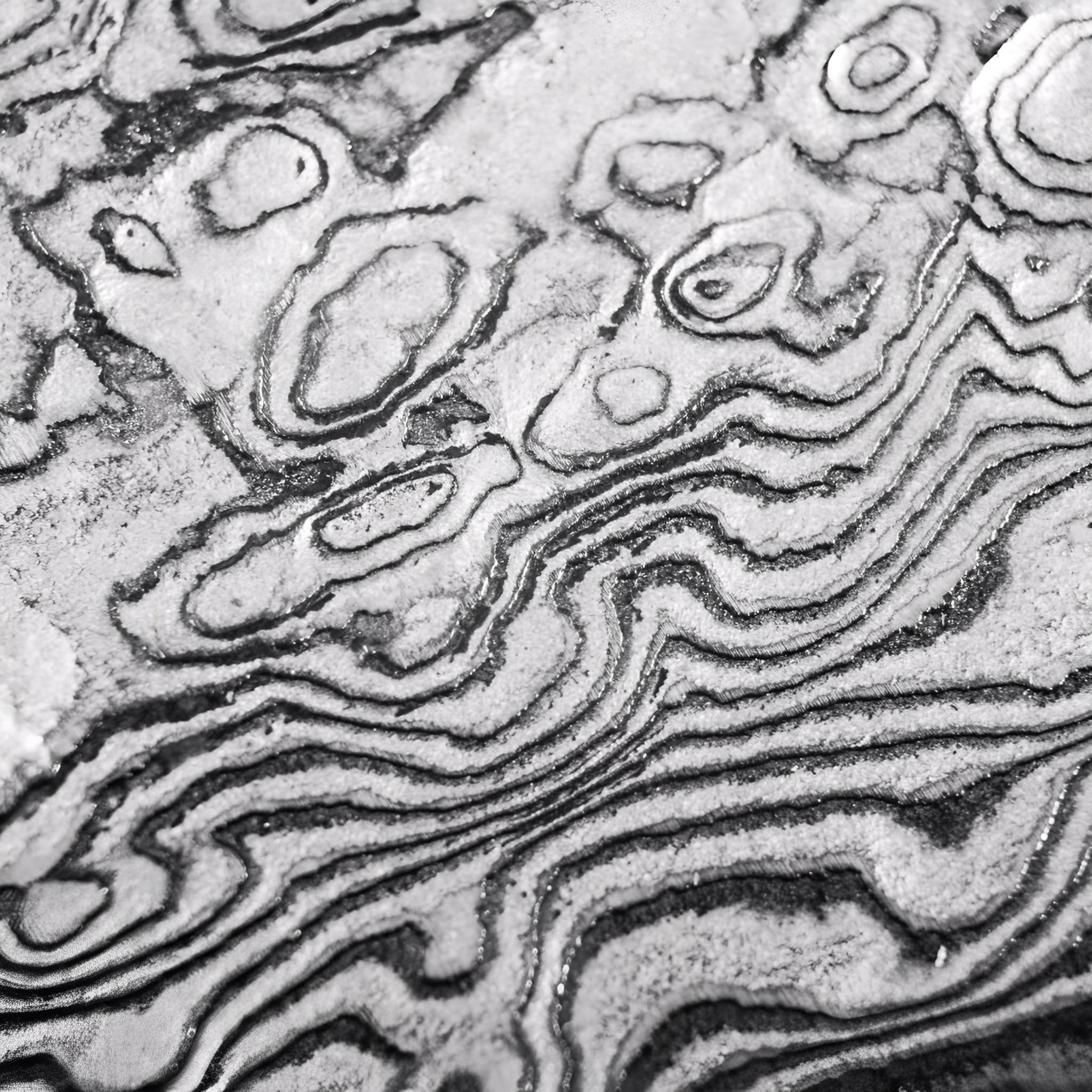
Materials Chosen Without Compromise
We select only the highest-grade steels and authentic fittings to ensure every katana is both a masterpiece and a reliable companion.
From the flawless hamon line to the perfectly balanced tang, each detail is carefully inspected to meet the highest standards of performance and aesthetics.
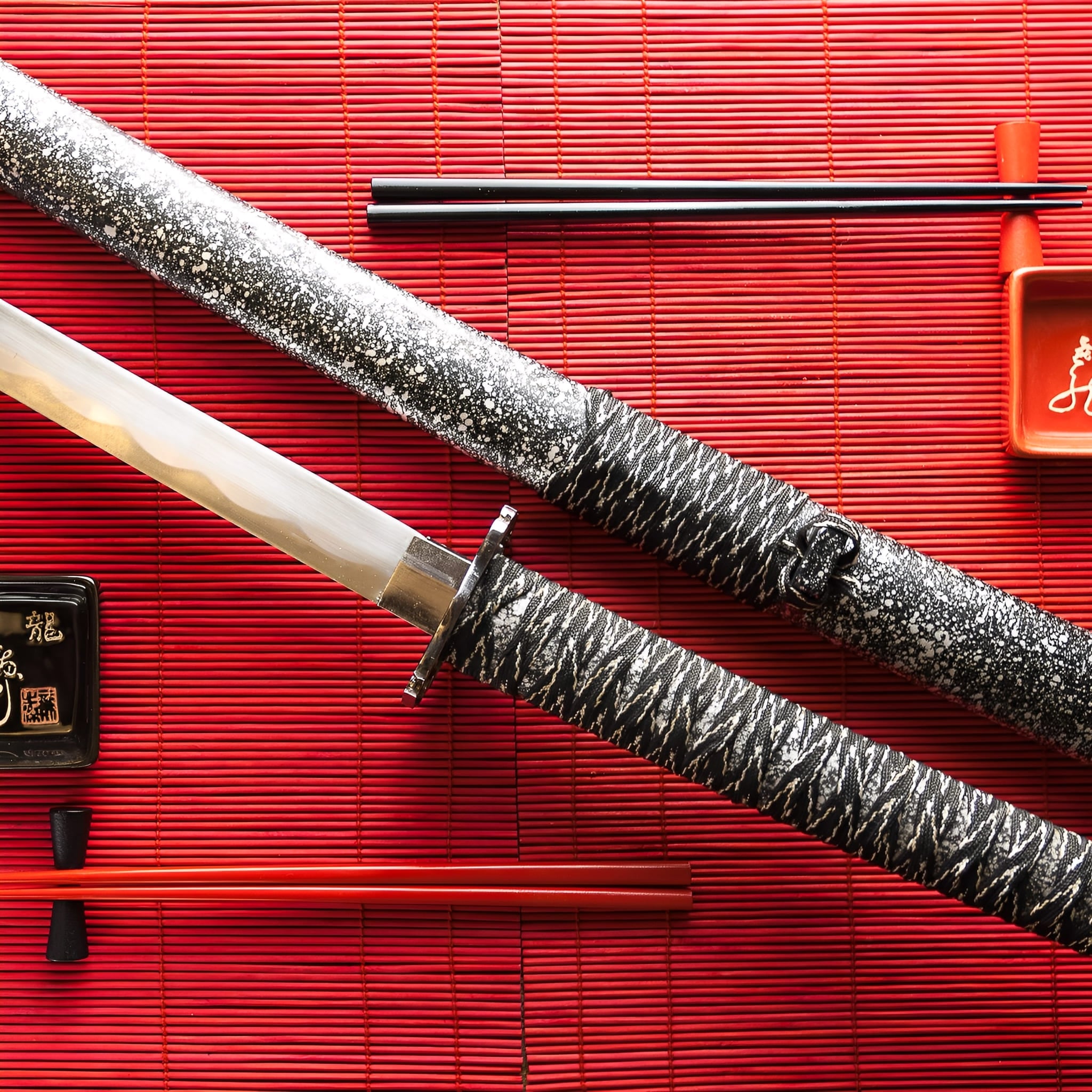
More Than a Sword, A Lifelong Legacy
Owning a handmade katana is an experience that goes beyond the blade itself. It’s holding history, tradition, and craftsmanship in your hands.
Whether displayed as a work of art or wielded with precision, your katana will stand as a symbol of timeless skill and dedication for generations to come.
-
Key Destinations
United States: 5–7 days
Canada: 5–7 days
Australia: 6–9 days
Denmark: 4–6 days
Netherlands: 3–5 days
Sweden: 4–6 days
Switzerland: 3–5 days
Finland: 5–7 days
Singapore: 6–8 days -
Central European Partners
France: 2–3 days
Germany: 3–5 days
Spain: 4–6 days
Italy: 4–6 days
Belgium: 3–5 days
Austria: 4–6 days
Ireland: 4–6 days
Poland: 4–6 days
Portugal: 4–6 days -
Extended EU Network
Czechia: 4–6 days
Hungary: 4–6 days
Slovakia: 4–6 days
Slovenia: 5–7 days
Romania: 5–7 days
Bulgaria: 5–7 days
Croatia: 5–7 days
Serbia: 5–7 days
Estonia: 5–7 days
Latvia: 5–7 days
Lithuania: 5–7 days
Luxembourg: 3–5 days
Greece: 5–8 days -
FAQ’s
Visit our FAQs page to find answers to common questions.